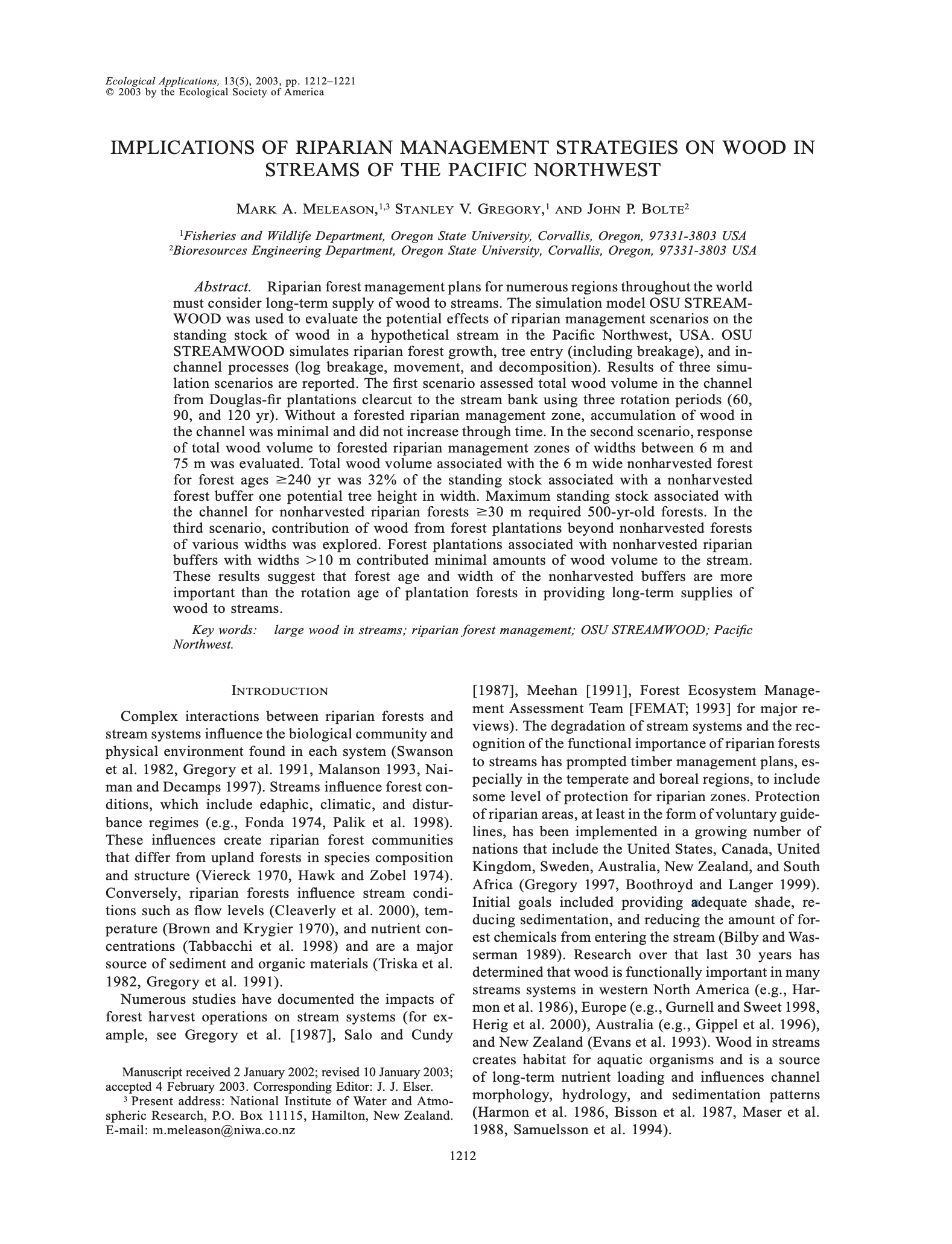
Riparian forest management plans for numerous regions throughout the world must consider long-term supply of wood to streams. The simulation model OSU STREAMWOOD was used to evaluate the potential effects of riparian management scenarios on the standing stock of wood in a hypothetical stream in the Pacific Northwest, USA. OSU STREAMWOOD simulates riparian forest growth, tree entry (including breakage), and inchannel processes (log breakage, movement, and decomposition). Results of three simulation scenarios are reported. The first scenario assessed total wood volume in the channel from Douglas-fir plantations clearcut to the stream bank using three rotation periods (60, 90, and 120 yr). Without a forested riparian management zone, accumulation of wood in the channel was minimal and did not increase through time. In the second scenario, response of total wood volume to forested riparian management zones of widths between 6 m and 75 m was evaluated. Total wood volume associated with the 6 m wide nonharvested forest for forest ages $240 yr was 32% of the standing stock associated with a nonharvested forest buffer one potential tree height in width. Maximum standing stock associated with the channel for nonharvested riparian forests $30 m required 500-yr-old forests. In the third scenario, contribution of wood from forest plantations beyond nonharvested forests of various widths was explored. Forest plantations associated with nonharvested riparian buffers with widths .10 m contributed minimal amounts of wood volume to the stream. These results suggest that forest age and width of the nonharvested buffers are more important than the rotation age of plantation forests in providing long-term supplies of wood to streams.
